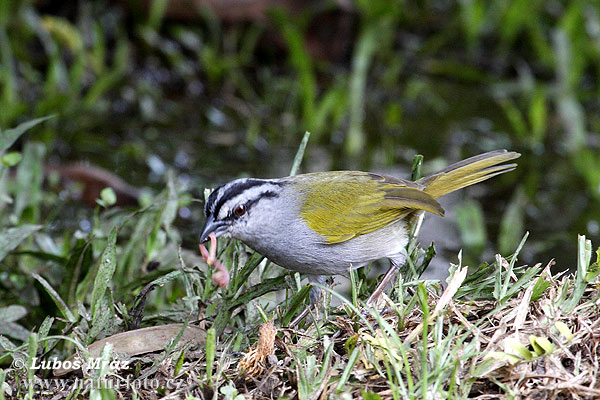The Arremonops Conirostris: A Closer Look At The Colombian Brush-finch
Share
The Arremonops conirostris, commonly known as the Colombian Brush-Finch, is a fascinating bird species belonging to the family Emberizidae. This article delves into the taxonomy, habitat, behavior, and conservation status of this unique bird, providing birdwatchers and enthusiasts with valuable insights.
Taxonomy
The Colombian Brush-Finch is classified under the order Passeriformes, which encompasses a vast array of songbirds. Within this order, it belongs to the family Emberizidae and the subfamily Emberizinae. The species name, Arremonops conirostris, was first described by Bonaparte in 1815. The subspecies conirostris is primarily found in specific regions of Colombia and northern Venezuela.
Physical Characteristics
The Colombian Brush-Finch is characterized by its distinctive physical features. It has a robust body, a relatively short tail, and a conical bill that is well-adapted for its diet. The plumage is typically olive-brown with lighter underparts, providing excellent camouflage in its natural habitat. Males and females exhibit similar coloration, making it challenging to differentiate between the sexes.

Habitat
This species thrives in a variety of habitats, primarily along the Caribbean coast of Colombia. Its range extends from the upper Sinu Valley in Bolivar, eastward to the foothills of the Sierra Nevada de Santa Marta, and south into the Magdalena Valley. The Colombian Brush-Finch is also found on the eastern slopes of the Eastern Andes in Arauca and Boyaca. In northern Venezuela, it inhabits regions from Falcon and Lara east to Sucre, and south to southeastern Tachira, Apure, Guarica, and northern Bolivar, south of the Orinoco. Additionally, it can be spotted in the Rio Branco region of northern Brazil.

Diet
The diet of the Colombian Brush-Finch primarily consists of seeds, fruits, and insects. Its conical bill is perfectly suited for cracking open seeds, allowing it to access a variety of food sources. This adaptability in diet plays a crucial role in its survival, especially in changing environmental conditions.
Behavior
The Colombian Brush-Finch is known for its melodious songs, which are often heard during the breeding season. These songs serve various purposes, including attracting mates and establishing territory. The species is generally shy and prefers to stay hidden in dense vegetation, making it a challenge for birdwatchers to spot. However, they can often be seen foraging on the ground or in low shrubs.

Reproduction
Breeding typically occurs during the wet season, with nests built in dense foliage to protect against predators. The female lays a clutch of eggs, which she incubates for about two weeks. Both parents participate in feeding the chicks once they hatch, ensuring their survival in the wild.
Conservation Status
Currently, the Colombian Brush-Finch is not considered endangered, but habitat loss due to deforestation and agricultural expansion poses a threat to its population. Conservation efforts are essential to maintain its habitat and ensure the survival of this beautiful species.

Birdwatching Tips
For birdwatchers eager to observe the Colombian Brush-Finch, the best locations are the dense forests and shrubby areas along the Caribbean coast of Colombia. Early morning or late afternoon are ideal times for spotting these birds, as they are most active during these hours. Patience and quiet observation are key, as their shy nature often keeps them hidden.
The Colombian Brush-Finch is a remarkable species that plays a vital role in its ecosystem. Its presence indicates a healthy environment, and efforts to protect its habitat will benefit not only this bird but also the diverse wildlife that shares its home. Observing this bird in its natural habitat is a rewarding experience that highlights the beauty and complexity of avian life in Colombia.
